"I do not recognize you in make-up" (c)
Since today is a day off, summer, and generally vacations and family vacations, we decided to distract from the scientific research and technical solutions of our university scientists and talk about the clichéing and typing of human thinking in a somewhat unexpected perspective.
Let the question? Who do you think is depicted in this figure - the one on the right?

No, this is not a burzhuin from “Malchish-Kibalchish”, not Mr. Pickwick, and not even Dr. Livesey. This, dear comrades, is our dear, world famous veterinarian Dr. Aibolit. And do not, please, talk about the “do not look like” and “recruited ad painters.” This, for your information, was not a painter drew, but the great artist Mstislav Valerianovich Dobuzhinsky. Just drew a long time ago - Dobuzhinsky, if he forgot, - this is an artist, the artists read the books with drawings in their childhood; those with their drawings were read by your parents in childhood.
Moreover, in front of you is the first, one might say, lifetime portrait of Aibolit.
The fact is thatit was the artist Dobuzhinsky, in a sense, who awakened both Aibolit and his eternal antagonist Barmaley to life. As our famous linguist Lev Ouspensky tells us in the book “The Name of Your House,” according to Korney Ivanovich Chukovsky himself, his main poetic cycle originated in a rather amusing way. Many years ago, the poet, in company with Dobuzhinsky, was walking along the Petrograd side, and at some point they took to Barmaleev Street. The name attracted attention, and the artist inquired about who this Barmaley was. Chukovsky began to talk about a possible etymology, but an impatient artist interrupted him: “Not true! - he said. - I know who was Barmaley. He was a terrible robber. This is how he looked ... ”And on a piece of paper Dobuzhinsky sketched a fierce villain bearded and mustached ... After some time, Chukovsky published a new book called “Barmaley” and, of course, with drawings by Mstislav Dobuzhinsky. It was from there, from the first edition, that this image was taken.
But, nevertheless, I can only repeat after you - it does not look like. The correct Aibolit is, for example, in the great Suteev.
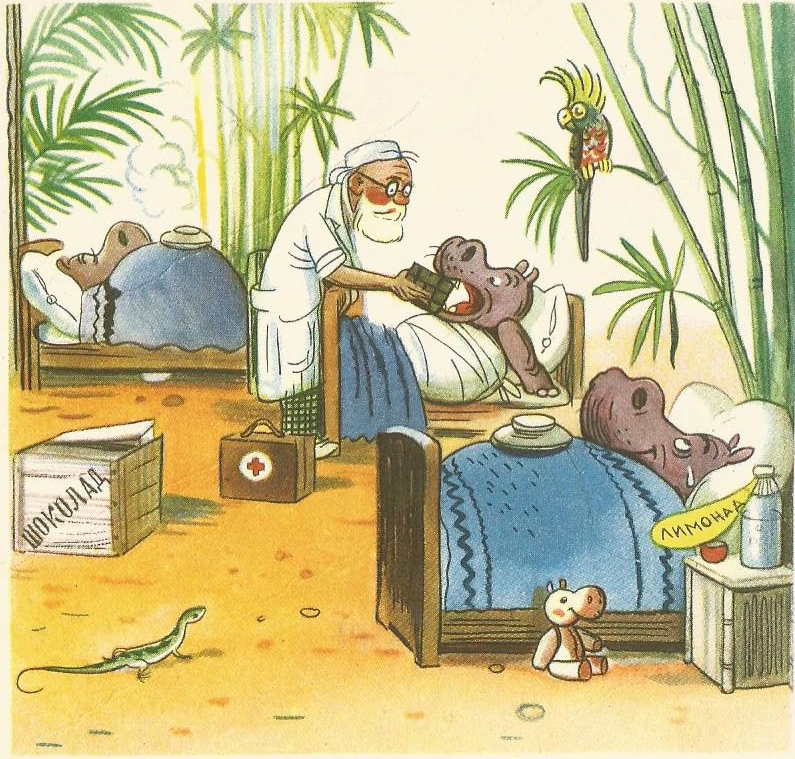
Let Dobuzhinsky character and father, but with the appearance of Aibolit - did not guess. This happens. But with Barmaley, on the contrary - guessed. The text of the fairy tale does not mention anywhere that Barmaley is a pirate, in Chukovsky he is only an ogre (yes, yes, cannibal, Chukovsky is a very kind children's writer in general) and a robber. But for some reason Dobuzhinsky portrayed him as a pirate, and for almost a century now, “bloodthirsty and merciless” does not remove the uniforms of sea robbers. Even Chukovsky much later, in the prose version of “Doctor Aibolit”, had to somehow explain the pirate origin of the famous robber.
In fact, this problem is rather curious. Children's literature is a phenomenon so peculiar and special that it draws completely on a special kind of art. The above-mentioned feature, for example, puts it closer to icon painting than to its “adult” sister. And in fact - there is CANON in children's literature. No one knows what Anna Karenina looked like; everyone solves this problem on their own. But the appearance of some Pinocchio is perfectly known to everyone, and any other image is sin, haram and blasphemy! Any cult character of children's literature quickly acquires a canonical look, from which no one arbitrarily free artist can afford to deviate.
And this canon is often designed to the smallest detail.
Take, for example, Pinocchio. Alexey Tolstoy, as is known, not only returned the original name to Pinocchio’s Russian version (Carlo Collodi’s book was first called Buratino’s Story (literally “wooden doll,” that is, “puppet”), and only in the second, extended version of the tale, the puppet acquired the name of Pinocchio , that is, "pine nut"), but also considerably facilitated the work of future illustrators. Firstly, by that time classical illustrations for Pinocchio by the Italian artist Matsanti existed for many years,

and secondly, the text of Buratino was described in great detail in the text. For a long time, the illustrations of 1946 by the famous Aminadav Kanevsky were considered classic, where the image of the main character was painted strictly according to the book (previous versions of B. Malakhovsky and N. Muratov were not particularly successful).
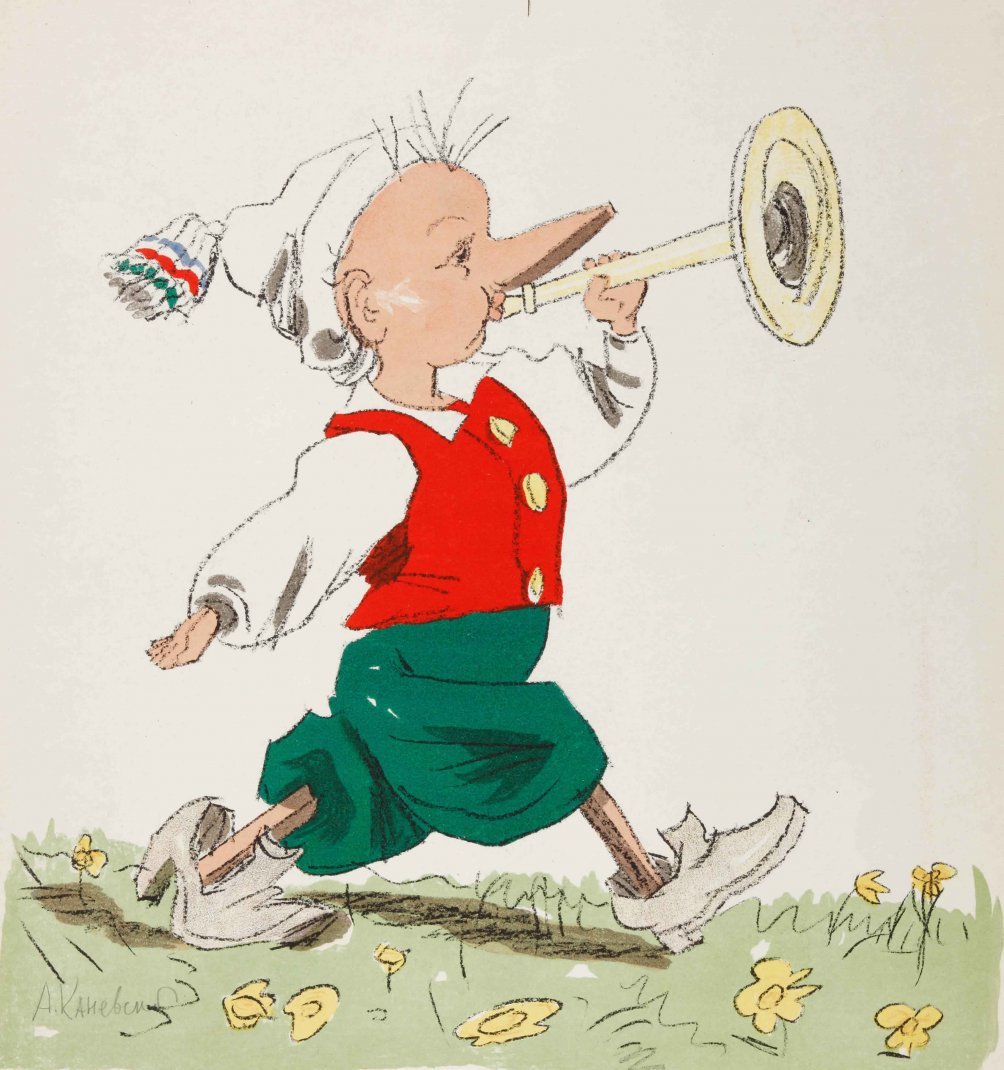
The same Kanevsky, by the way, is the creator of the canon of another iconic character, Murzilki, who, as you know, appeared in the book of Russian travel writer Anna Khvolson “Travels of Forest Men”, there was a little man in a tail coat, with a cane and a monocle.
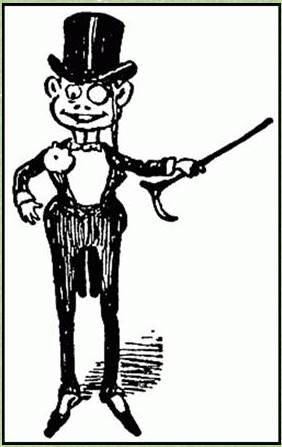
With the appearance in the 20s of the magazine "Murzilka", the owner of such a sonorous name was made ... with a small white dog constantly getting into different adventures with his master, boy Petya, and only then Kanevsky invented a yellow furry creature in a beret, with a scarf and a camera.
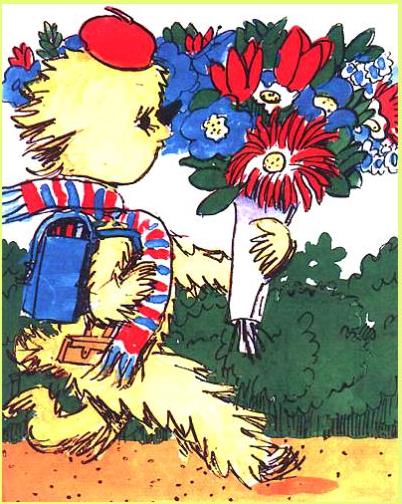
But back to Pinocchio.
Kanevsky, of course, was a great children's illustrator, but Pinocchio was not given to him. This happens - neither the name nor the talent of the artist, as we will see, still do not guarantee success. The honor of creating the canonical image of Buratino belongs to the equally famous artist Leonid Vladimirsky. In 1953, this then unknown graduate of the art faculty of VGIK worked at the studio “Filmstrip” and, starting the filmstrip “Golden Key”, decided to fool around a bit. As the artist himself recalls: “I was young and sassy then and did what I wanted. Tolstoy Pinocchio wears a white cap from an old sock ("Behind the horizon flashed a white cap Buratino"), but it seemed boring to me, and I made the cap striped - such socks were very fashionable in Italy at one time. I and the jacket Buratino was not brown, but red, my pants were not green,

In 1956, a book with illustrations of Vladimirsky was published, and it went away. "Vladimirsky" Pinocchio in shorts and hair-shavings began the procession around the country and soon was everywhere - from labels on lemonade bottles to the two-part film "The Adventures of Buratino" by Leonid Nechaev. Even in new times, artists, even the most venerable ones like Mikhail Skobelev, did not risk breaking the canon.

The red and white cap and shorts have become as indispensable attribute of Pinocchio, as big ears - the hallmark of Cheburashka.
Here, by the way, is a good example of the fact that a canonical image is not given to every talent, and how sometimes it is useful for an artist to give a damn about an author's text. In Ouspensky, the image of Cheburashka is described rather indistinctly: “They made the Cheburashka in a toy factory, but they did it so badly that it was impossible to say who he was: a hare, a dog, a cat or an Australian kangaroo. His eyes were big and yellow like that of an eagle owl, his head was round and hare, and his tail was short and fluffy, like what usually happens with little cubs.
Cheburashka and the first illustrator of the book portrayed something like this - a great children's illustrator Valery Alfeyevsky, but his version is remembered only by historians of illustrations.

The genius Gennady Kalinovsky, who made a second attempt, did not get any better.

And only in 1968 in the animated film by Roman Kachanov “Crocodile Gena” a magnificent image appeared, invented and drawn by Leonid Schwartzman without any regard for Ouspensky's description. And immediately got into the top ten - another Cheburashka already impossible to imagine.

Cartoons, I must say, as a more popular art form, were often “interrupted” by images of illustrators.
This happened, for example, with Carlson. I do not remember a single case when in children's magazines, on posters, etc. used the image sanctioned and approved by Lindgren herself, drawn by her permanent illustrator Ilon Wikland.
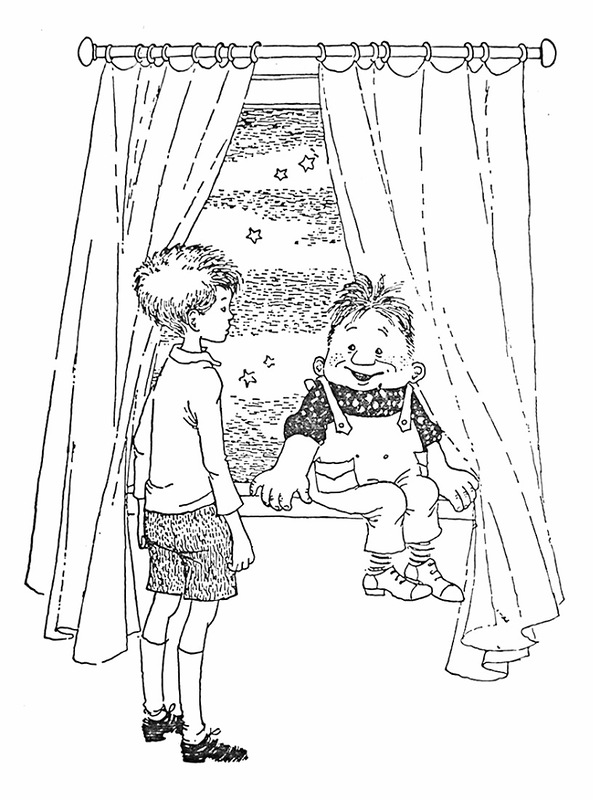
And although in Soviet times books about Carlson were published only with her illustrations, Carlson's local artist, who was rumored to be drawn from some Stockholm homeless man, was completely eclipsed by our Soviet Karlson, redhead and in stylish overalls. The same one from Boris Stepantsov’s cartoon “The Kid and Carlson”, drawn by Anatoly Savchenko.
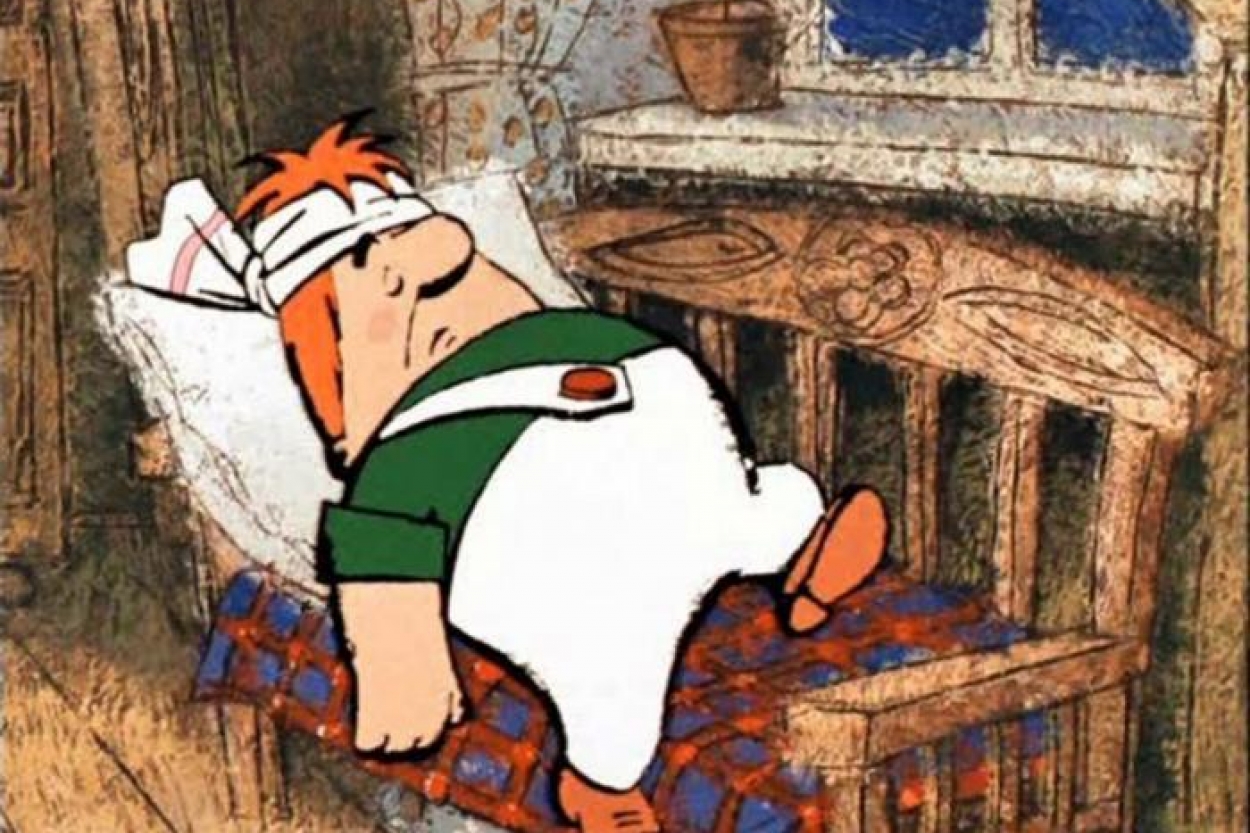
The same thing happened with Winnie the Pooh - a charming fat man, created by director Fedor Khitruk and production designer Edward Nazarov was so irresistible that

he simply brought out of the heads of Soviet children and classic illustrations of Sheppard in the West,

and illustrations of Diodorov and Kalinovsky from the Soviet edition of the book .
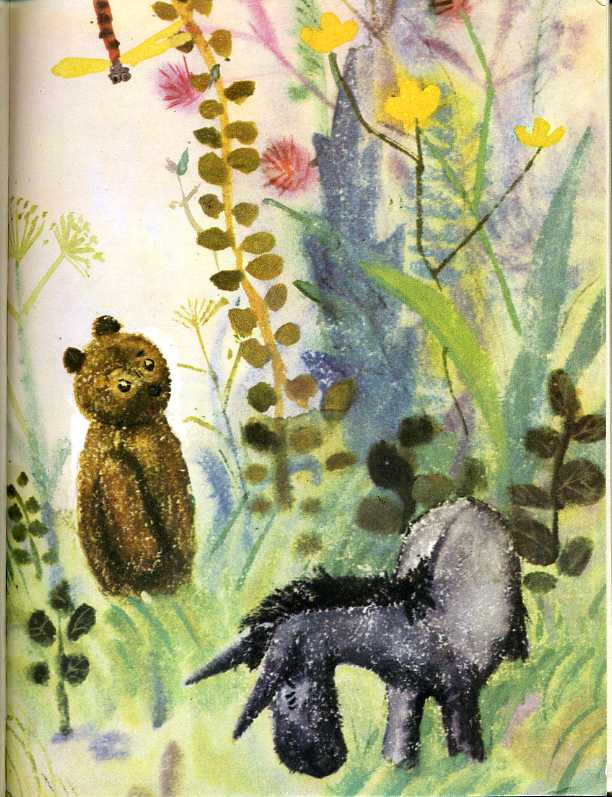
But the reverse cases were also frequent - when the multipliers, despite their multimillion-dollar audience, were forced to bow to modest book schedules, they were unable to overcome the established image.
Thus, the creators of the multi-part cartoon “The Adventures of Captain Vrungel”

were actually forced to copy the illustrations of the great Konstantin Rotov made to the first edition of Nekrasov’s book to the details in detail.
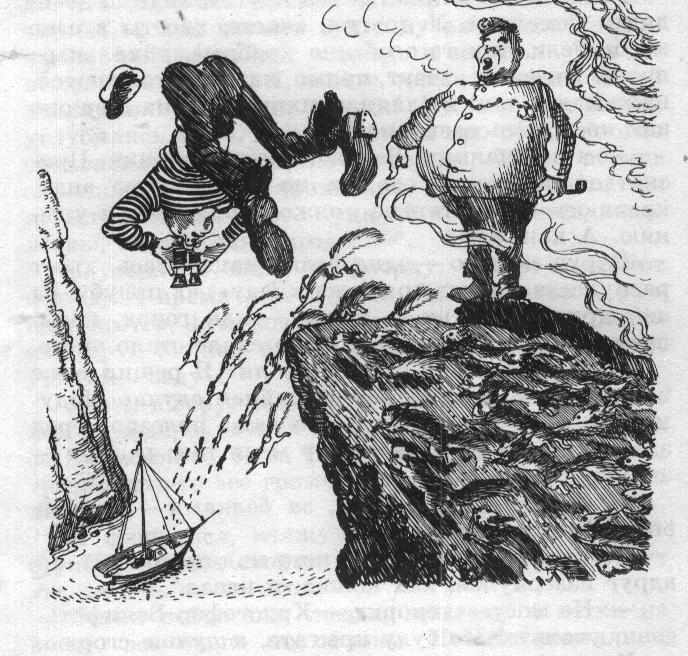
By the way, Rotov has at least two canonical images on his account - he was the first illustrator of “Old Man Hottabych”, and all subsequent incarnations of the dense, but charming genie - that in the cinema, that in the illustration - were already done according to the Roto model.
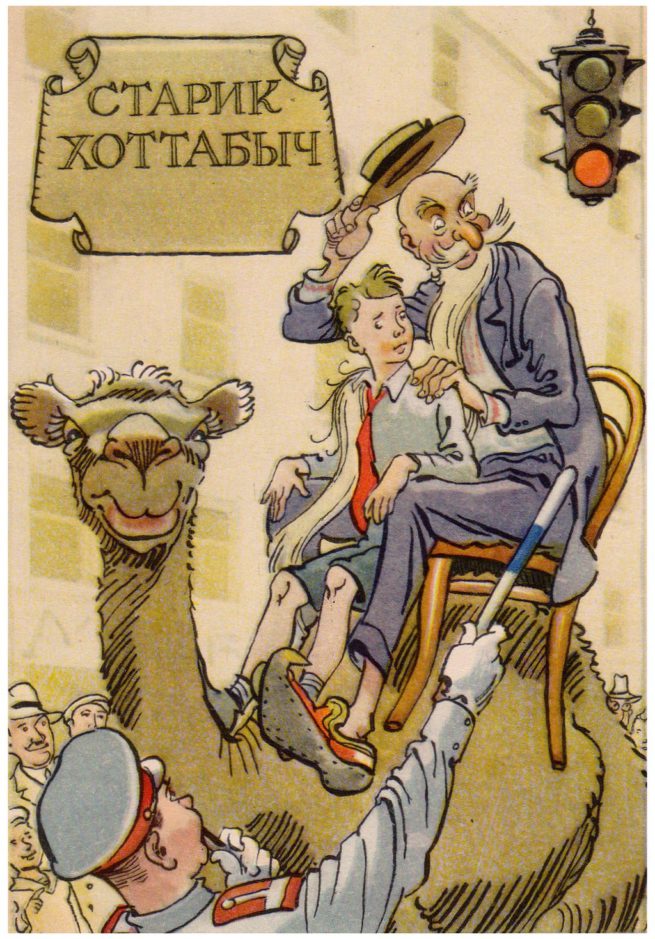
The same Roman Kachanov, who made “Cheburashka”, starting “The Secret of the Third Planet,” invited Yevgeny Migunov, the author of the classic illustrations to Bulychev's “Alisa”, to play the role of art director.
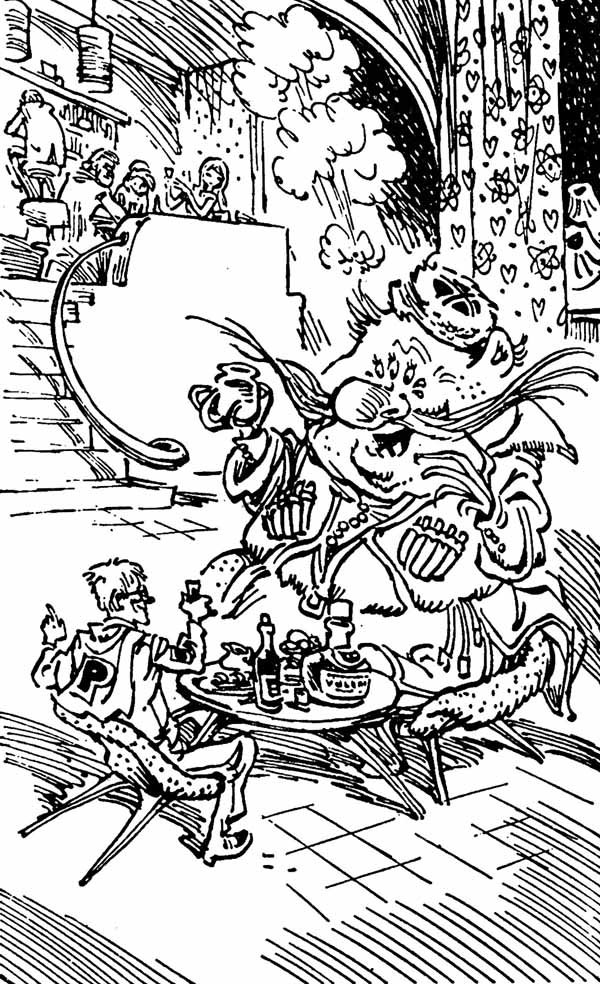
And although the state of health did not allow Yevgeny Tikhonovich to accept this offer, many of the images in the cartoon are clearly “Migunovskys.”

Of course, the animators spoiled by the audience could not but make attempts at rebellion.
So, for example, happened to Dunno. It is well known that the image of Dunno was invented by the first illustrator of the fairy tale Alexey Laptev
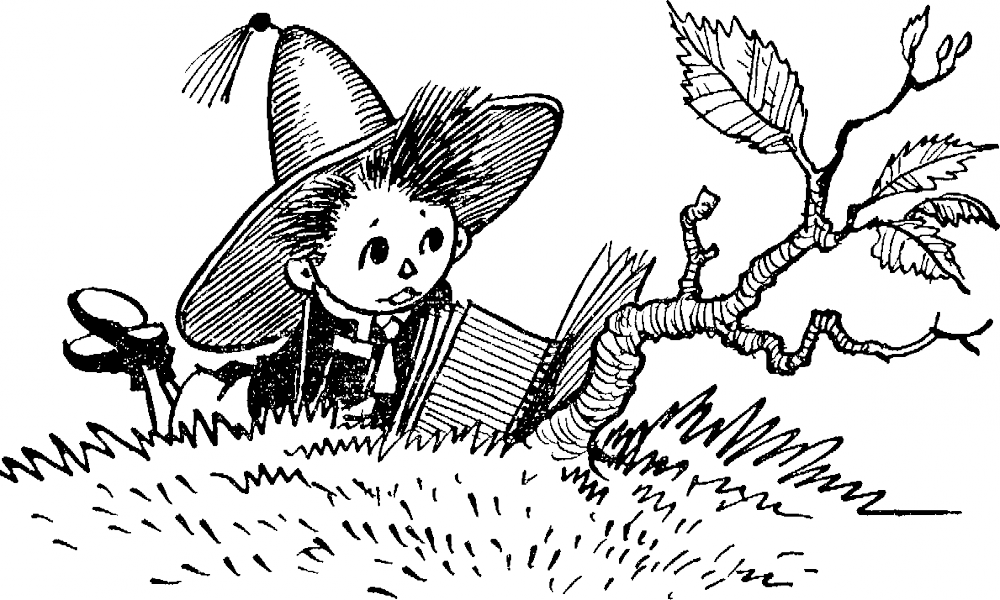
and brought to shine in "Dunno on the Moon" who took the baton from Laptev by the magnificent artist Heinrich Walck.

But the creators of the multiseries cartoon "Dunno in the Sunny City", according to the stories, frankly decided to neglect them, having decided that they would create their own, not worse. And what? From their doll-like baby doll, by a misunderstanding called the Dunno, all Soviet children spat.

And they didn’t get rid of this psychotrauma, even becoming parents themselves, so far no-no, yes, they will get a discussion somewhere on social networks: “Soviet puppet cartoons are evil. And you, too, were afraid of the cartoon "Dunno in the Sunny City"? I shudder now! ”
With a well-established image, the animators did not risk joking and, starting in the new times, the cartoon “Dunno on the Moon”, not only did not try to engage in amateur activities, but proudly wrote in the annotation: “The domestic full-length serial based on the fairy-tale of Nikolay Nosov based on illustrations G. Valka ".
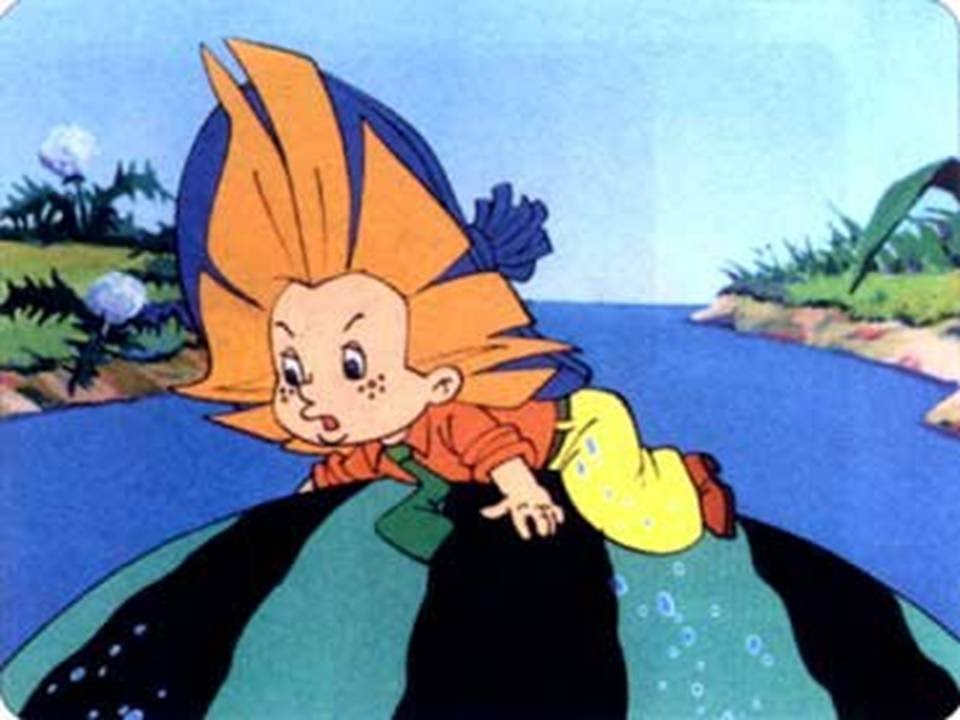
Why all?
Because you don't have to joke with holy things. As Ostap Bender used to say, "this is the crystal dream of my childhood, do not touch it with your own paws." Nekrasov also warned us that if we are embroiled in our head - “you can't beat her out of her otduda: they rest on her, everyone stands on her own!” You can’t change what has been imprinted tightly. Although ... Although today's children Disney Winnie the Pooh more and more displaces our mother.
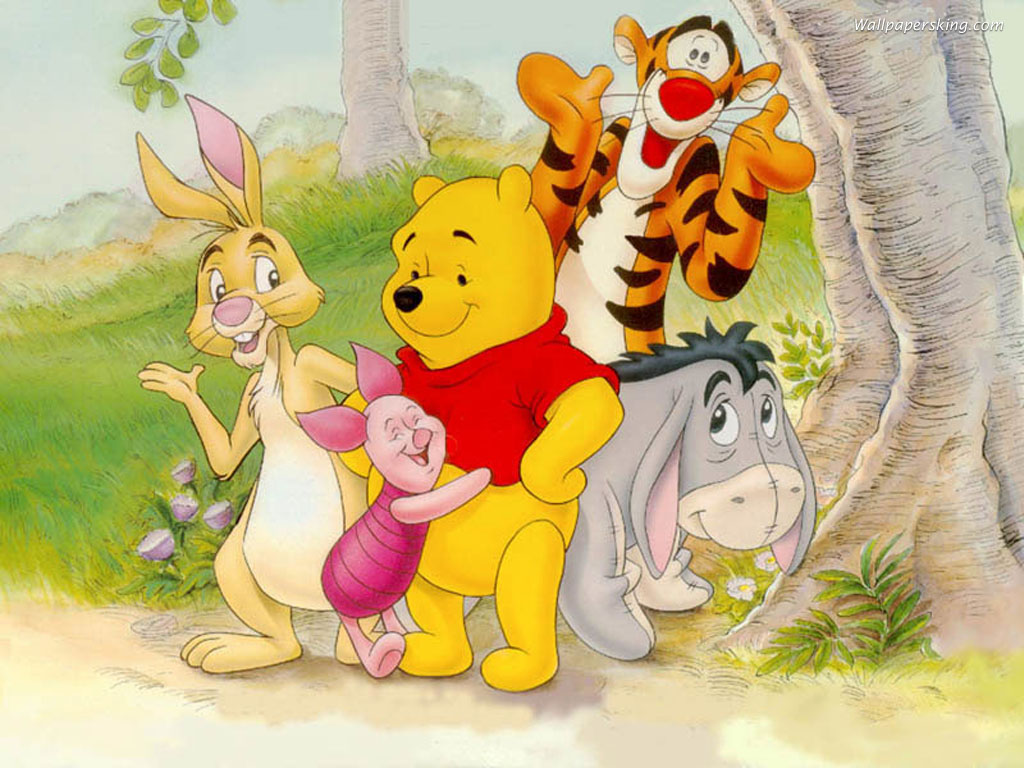
But on the other hand, does the Disney have real Winnie the Pooh, their swings to the swings? They have even in the books produced in Russia instead of Tigers - Tigger, donkey is not called Eeyore, but forgive, Lord, Ushastik, and instead of Piglet they, just do not run away - Khrynik!
Hryunik ... would kill.
Let the question? Who do you think is depicted in this figure - the one on the right?

No, this is not a burzhuin from “Malchish-Kibalchish”, not Mr. Pickwick, and not even Dr. Livesey. This, dear comrades, is our dear, world famous veterinarian Dr. Aibolit. And do not, please, talk about the “do not look like” and “recruited ad painters.” This, for your information, was not a painter drew, but the great artist Mstislav Valerianovich Dobuzhinsky. Just drew a long time ago - Dobuzhinsky, if he forgot, - this is an artist, the artists read the books with drawings in their childhood; those with their drawings were read by your parents in childhood.
Moreover, in front of you is the first, one might say, lifetime portrait of Aibolit.
The fact is thatit was the artist Dobuzhinsky, in a sense, who awakened both Aibolit and his eternal antagonist Barmaley to life. As our famous linguist Lev Ouspensky tells us in the book “The Name of Your House,” according to Korney Ivanovich Chukovsky himself, his main poetic cycle originated in a rather amusing way. Many years ago, the poet, in company with Dobuzhinsky, was walking along the Petrograd side, and at some point they took to Barmaleev Street. The name attracted attention, and the artist inquired about who this Barmaley was. Chukovsky began to talk about a possible etymology, but an impatient artist interrupted him: “Not true! - he said. - I know who was Barmaley. He was a terrible robber. This is how he looked ... ”And on a piece of paper Dobuzhinsky sketched a fierce villain bearded and mustached ... After some time, Chukovsky published a new book called “Barmaley” and, of course, with drawings by Mstislav Dobuzhinsky. It was from there, from the first edition, that this image was taken.
But, nevertheless, I can only repeat after you - it does not look like. The correct Aibolit is, for example, in the great Suteev.

Let Dobuzhinsky character and father, but with the appearance of Aibolit - did not guess. This happens. But with Barmaley, on the contrary - guessed. The text of the fairy tale does not mention anywhere that Barmaley is a pirate, in Chukovsky he is only an ogre (yes, yes, cannibal, Chukovsky is a very kind children's writer in general) and a robber. But for some reason Dobuzhinsky portrayed him as a pirate, and for almost a century now, “bloodthirsty and merciless” does not remove the uniforms of sea robbers. Even Chukovsky much later, in the prose version of “Doctor Aibolit”, had to somehow explain the pirate origin of the famous robber.
In fact, this problem is rather curious. Children's literature is a phenomenon so peculiar and special that it draws completely on a special kind of art. The above-mentioned feature, for example, puts it closer to icon painting than to its “adult” sister. And in fact - there is CANON in children's literature. No one knows what Anna Karenina looked like; everyone solves this problem on their own. But the appearance of some Pinocchio is perfectly known to everyone, and any other image is sin, haram and blasphemy! Any cult character of children's literature quickly acquires a canonical look, from which no one arbitrarily free artist can afford to deviate.
And this canon is often designed to the smallest detail.
Take, for example, Pinocchio. Alexey Tolstoy, as is known, not only returned the original name to Pinocchio’s Russian version (Carlo Collodi’s book was first called Buratino’s Story (literally “wooden doll,” that is, “puppet”), and only in the second, extended version of the tale, the puppet acquired the name of Pinocchio , that is, "pine nut"), but also considerably facilitated the work of future illustrators. Firstly, by that time classical illustrations for Pinocchio by the Italian artist Matsanti existed for many years,

and secondly, the text of Buratino was described in great detail in the text. For a long time, the illustrations of 1946 by the famous Aminadav Kanevsky were considered classic, where the image of the main character was painted strictly according to the book (previous versions of B. Malakhovsky and N. Muratov were not particularly successful).

The same Kanevsky, by the way, is the creator of the canon of another iconic character, Murzilki, who, as you know, appeared in the book of Russian travel writer Anna Khvolson “Travels of Forest Men”, there was a little man in a tail coat, with a cane and a monocle.

With the appearance in the 20s of the magazine "Murzilka", the owner of such a sonorous name was made ... with a small white dog constantly getting into different adventures with his master, boy Petya, and only then Kanevsky invented a yellow furry creature in a beret, with a scarf and a camera.

But back to Pinocchio.
Kanevsky, of course, was a great children's illustrator, but Pinocchio was not given to him. This happens - neither the name nor the talent of the artist, as we will see, still do not guarantee success. The honor of creating the canonical image of Buratino belongs to the equally famous artist Leonid Vladimirsky. In 1953, this then unknown graduate of the art faculty of VGIK worked at the studio “Filmstrip” and, starting the filmstrip “Golden Key”, decided to fool around a bit. As the artist himself recalls: “I was young and sassy then and did what I wanted. Tolstoy Pinocchio wears a white cap from an old sock ("Behind the horizon flashed a white cap Buratino"), but it seemed boring to me, and I made the cap striped - such socks were very fashionable in Italy at one time. I and the jacket Buratino was not brown, but red, my pants were not green,

In 1956, a book with illustrations of Vladimirsky was published, and it went away. "Vladimirsky" Pinocchio in shorts and hair-shavings began the procession around the country and soon was everywhere - from labels on lemonade bottles to the two-part film "The Adventures of Buratino" by Leonid Nechaev. Even in new times, artists, even the most venerable ones like Mikhail Skobelev, did not risk breaking the canon.

The red and white cap and shorts have become as indispensable attribute of Pinocchio, as big ears - the hallmark of Cheburashka.
Here, by the way, is a good example of the fact that a canonical image is not given to every talent, and how sometimes it is useful for an artist to give a damn about an author's text. In Ouspensky, the image of Cheburashka is described rather indistinctly: “They made the Cheburashka in a toy factory, but they did it so badly that it was impossible to say who he was: a hare, a dog, a cat or an Australian kangaroo. His eyes were big and yellow like that of an eagle owl, his head was round and hare, and his tail was short and fluffy, like what usually happens with little cubs.
Cheburashka and the first illustrator of the book portrayed something like this - a great children's illustrator Valery Alfeyevsky, but his version is remembered only by historians of illustrations.

The genius Gennady Kalinovsky, who made a second attempt, did not get any better.

And only in 1968 in the animated film by Roman Kachanov “Crocodile Gena” a magnificent image appeared, invented and drawn by Leonid Schwartzman without any regard for Ouspensky's description. And immediately got into the top ten - another Cheburashka already impossible to imagine.

Cartoons, I must say, as a more popular art form, were often “interrupted” by images of illustrators.
This happened, for example, with Carlson. I do not remember a single case when in children's magazines, on posters, etc. used the image sanctioned and approved by Lindgren herself, drawn by her permanent illustrator Ilon Wikland.

And although in Soviet times books about Carlson were published only with her illustrations, Carlson's local artist, who was rumored to be drawn from some Stockholm homeless man, was completely eclipsed by our Soviet Karlson, redhead and in stylish overalls. The same one from Boris Stepantsov’s cartoon “The Kid and Carlson”, drawn by Anatoly Savchenko.

The same thing happened with Winnie the Pooh - a charming fat man, created by director Fedor Khitruk and production designer Edward Nazarov was so irresistible that

he simply brought out of the heads of Soviet children and classic illustrations of Sheppard in the West,

and illustrations of Diodorov and Kalinovsky from the Soviet edition of the book .

But the reverse cases were also frequent - when the multipliers, despite their multimillion-dollar audience, were forced to bow to modest book schedules, they were unable to overcome the established image.
Thus, the creators of the multi-part cartoon “The Adventures of Captain Vrungel”

were actually forced to copy the illustrations of the great Konstantin Rotov made to the first edition of Nekrasov’s book to the details in detail.

By the way, Rotov has at least two canonical images on his account - he was the first illustrator of “Old Man Hottabych”, and all subsequent incarnations of the dense, but charming genie - that in the cinema, that in the illustration - were already done according to the Roto model.

The same Roman Kachanov, who made “Cheburashka”, starting “The Secret of the Third Planet,” invited Yevgeny Migunov, the author of the classic illustrations to Bulychev's “Alisa”, to play the role of art director.

And although the state of health did not allow Yevgeny Tikhonovich to accept this offer, many of the images in the cartoon are clearly “Migunovskys.”

Of course, the animators spoiled by the audience could not but make attempts at rebellion.
So, for example, happened to Dunno. It is well known that the image of Dunno was invented by the first illustrator of the fairy tale Alexey Laptev

and brought to shine in "Dunno on the Moon" who took the baton from Laptev by the magnificent artist Heinrich Walck.

But the creators of the multiseries cartoon "Dunno in the Sunny City", according to the stories, frankly decided to neglect them, having decided that they would create their own, not worse. And what? From their doll-like baby doll, by a misunderstanding called the Dunno, all Soviet children spat.

And they didn’t get rid of this psychotrauma, even becoming parents themselves, so far no-no, yes, they will get a discussion somewhere on social networks: “Soviet puppet cartoons are evil. And you, too, were afraid of the cartoon "Dunno in the Sunny City"? I shudder now! ”
With a well-established image, the animators did not risk joking and, starting in the new times, the cartoon “Dunno on the Moon”, not only did not try to engage in amateur activities, but proudly wrote in the annotation: “The domestic full-length serial based on the fairy-tale of Nikolay Nosov based on illustrations G. Valka ".

Why all?
Because you don't have to joke with holy things. As Ostap Bender used to say, "this is the crystal dream of my childhood, do not touch it with your own paws." Nekrasov also warned us that if we are embroiled in our head - “you can't beat her out of her otduda: they rest on her, everyone stands on her own!” You can’t change what has been imprinted tightly. Although ... Although today's children Disney Winnie the Pooh more and more displaces our mother.

But on the other hand, does the Disney have real Winnie the Pooh, their swings to the swings? They have even in the books produced in Russia instead of Tigers - Tigger, donkey is not called Eeyore, but forgive, Lord, Ushastik, and instead of Piglet they, just do not run away - Khrynik!
Hryunik ... would kill.
